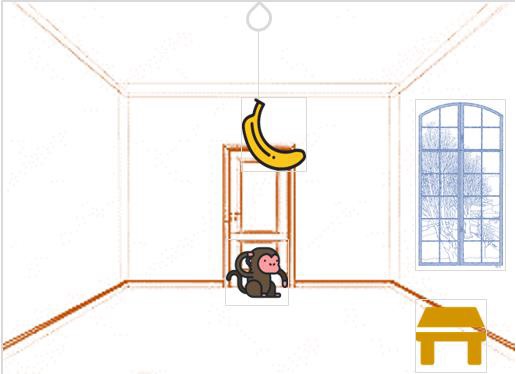
- Prolog - Home
- Prolog - Introduction
- Prolog - Environment Setup
- Prolog - Hello World
- Prolog - Basics
- Prolog - Relations
- Prolog - Data Objects
- Loop & Decision Making
- Conjunctions & Disjunctions
Prolog Operators
- Prolog - Type of Operators
- Prolog - Arithmetic Comparison Operators
- Prolog - Unification Operators
- Prolog - Term Comparision Operators
- Prolog - Arithmetic Operators
- Prolog - Logical Operators
- Prolog - List Operators
- Prolog - Custom Operators
Prolog Lists
- Prolog - Lists
- Prolog - Member of List
- Prolog - Length of List
- Prolog - Concatenating Lists
- Prolog - Appending to a List
- Prolog - Deleting from a List
- Prolog - Inserting into a List
- Prolog - Permutation Operation
- Prolog - Combination Operation
- Prolog - Reverse Items of a List
- Prolog - Shift Items of a List
- Prolog - Check Order of a List
- Prolog - SubSet of a Set
- Prolog - Union of Sets
- Prolog - Intersection of Sets
- Prolog - Even and Odd Length Finding
- Prolog - Divide a List
- Prolog - Find Maximum of a List
- Prolog - Find Minimum of a List
- Prolog - Find Sum of a List
- Prolog - Sorting List using MergeSort
Built-In Predicates
- Prolog - Built-In Predicates
- Prolog - Identifying Terms
- Prolog - Decomposing Structures
- Prolog - Collecting All
- Prolog - Mathematical Predicates
- Prolog - Scientific Predicates
Miscellaneous
- Recursion and Structures
- Prolog - Backtracking
- Prolog - Preventing Backtracking
- Prolog - Different and Not
- Prolog - Inputs and Outputs
- Tree Data Structure (Case Study)
- Prolog - Examples
- Prolog - Basic Programs
- Prolog - Practical Arithmetic Examples
- Prolog - Examples of Cuts
- Towers of Hanoi Problem
- Prolog - Linked Lists
- Monkey and Banana Problem
- Prolog Useful Resources
- Prolog - Quick Guide
- Prolog - Useful Resources
- Prolog - Discussion
Prolog - Monkey and Banana Problem
In this prolog example, we will see one very interesting and famous problem, The Monkey and Banana Problem.
Problem Statement
Suppose the problem is as given below −
A hungry monkey is in a room, and he is near the door.
The monkey is on the floor.
Bananas have been hung from the center of the ceiling of the room.
There is a block (or chair) present in the room near the window.
The monkey wants the banana, but cannot reach it.

So how can the monkey get the bananas?
So if the monkey is clever enough, he can come to the block, drag the block to the center, climb on it, and get the banana. Below are few observations in this case −
Monkey can reach the block, if both of them are at the same level. From the above image, we can see that both the monkey and the block are on the floor.
If the block position is not at the center, then monkey can drag it to the center.
If monkey and the block both are on the floor, and block is at the center, then the monkey can climb up on the block. So the vertical position of the monkey will be changed.
When the monkey is on the block, and block is at the center, then the monkey can get the bananas.
Now, let us see how we can solve this using Prolog. We will create some predicates as follows −
We have some predicates that will move from one state to another state, by performing action.
When the block is at the middle, and monkey is on top of the block, and monkey does not have the banana (i.e. has not state), then using the grasp action, it will change from has not state to have state.
From the floor, it can move to the top of the block (i.e. on top state), by performing the action climb.
The push or drag operation moves the block from one place to another.
Monkey can move from one place to another using walk or move clauses.
Another predicate will be canget(). Here we pass a state, so this will perform move predicate from one state to another using different actions, then perform canget() on state 2. When we have reached to the state has>, this indicates has banana. We will stop the execution.
Program(monkey_banana.pl)
move(state(middle,onbox,middle,hasnot), grasp, state(middle,onbox,middle,has)). move(state(P,onfloor,P,H), climb, state(P,onbox,P,H)). move(state(P1,onfloor,P1,H), drag(P1,P2), state(P2,onfloor,P2,H)). move(state(P1,onfloor,B,H), walk(P1,P2), state(P2,onfloor,B,H)). canget(state(_,_,_,has)). canget(State1) :- move(State1,_,State2), canget(State2).
Output
| ?- consult('D:/TP Prolog/Sample Codes/monkey_banana.pl').
compiling D:/TP Prolog/Sample Codes/monkey_banana.pl for byte code...
D:/TP Prolog/Sample Codes/monkey_banana.pl compiled, 5 lines read - 2166 bytes written, 4 ms
(16 ms) yes
| ?- trace.
The debugger will first creep -- showing everything (trace)
yes
{trace}
| ?- canget(state(atdoor, onfloor, atwindow, hasnot)).
1 1 Call: canget(state(atdoor,onfloor,atwindow,hasnot)) ?
2 2 Call: move(state(atdoor,onfloor,atwindow,hasnot),_52,_92) ?
2 2 Exit: move(state(atdoor,onfloor,atwindow,hasnot),walk(atdoor,_80),state(_80,onfloor,atwindow,hasnot)) ?
3 2 Call: canget(state(_80,onfloor,atwindow,hasnot)) ?
4 3 Call: move(state(_80,onfloor,atwindow,hasnot),_110,_150) ?
4 3 Exit: move(state(atwindow,onfloor,atwindow,hasnot),climb,state(atwindow,onbox,atwindow,hasnot)) ?
5 3 Call: canget(state(atwindow,onbox,atwindow,hasnot)) ?
6 4 Call: move(state(atwindow,onbox,atwindow,hasnot),_165,_205) ?
6 4 Fail: move(state(atwindow,onbox,atwindow,hasnot),_165,_193) ?
5 3 Fail: canget(state(atwindow,onbox,atwindow,hasnot)) ?
4 3 Redo: move(state(atwindow,onfloor,atwindow,hasnot),climb,state(atwindow,onbox,atwindow,hasnot)) ?
4 3 Exit: move(state(atwindow,onfloor,atwindow,hasnot),drag(atwindow,_138),state(_138,onfloor,_138,hasnot)) ?
5 3 Call: canget(state(_138,onfloor,_138,hasnot)) ?
6 4 Call: move(state(_138,onfloor,_138,hasnot),_168,_208) ?
6 4 Exit: move(state(_138,onfloor,_138,hasnot),climb,state(_138,onbox,_138,hasnot)) ?
7 4 Call: canget(state(_138,onbox,_138,hasnot)) ?
8 5 Call: move(state(_138,onbox,_138,hasnot),_223,_263) ?
8 5 Exit: move(state(middle,onbox,middle,hasnot),grasp,state(middle,onbox,middle,has)) ?
9 5 Call: canget(state(middle,onbox,middle,has)) ?
9 5 Exit: canget(state(middle,onbox,middle,has)) ?
7 4 Exit: canget(state(middle,onbox,middle,hasnot)) ?
5 3 Exit: canget(state(middle,onfloor,middle,hasnot)) ?
3 2 Exit: canget(state(atwindow,onfloor,atwindow,hasnot)) ?
1 1 Exit: canget(state(atdoor,onfloor,atwindow,hasnot)) ?
true ?
(47 ms) yes
{trace}
| ?- notrace.
The debugger is switched off
yes
| ?-